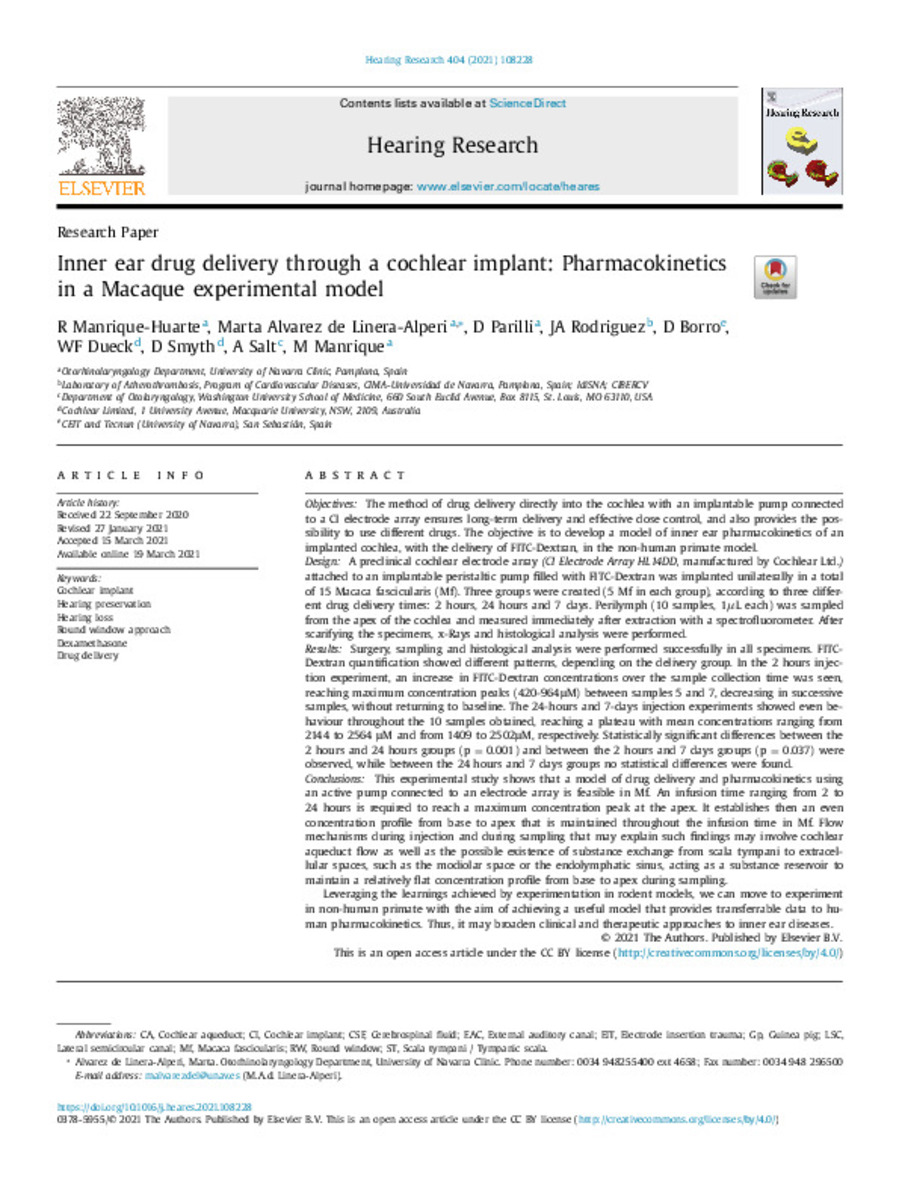Inner ear drug delivery through a cochlear implant: pharmacokinetics in a macaque experimental model
Palabras clave :
Cochlear implant
Hearing preservation
Hearing loss
Round window approach
Dexamethasone
Drug delivery
Fecha de publicación :
2021
Nota:
This is an open access article under the CC BY license
Cita:
Manrique-Huarte, R. (Raquel); Álvarez-de-Linera-Alperi, M. (Marta); Parilli, D. (Daniella); et al. "Inner ear drug delivery through a cochlear implant: pharmacokinetics in a macaque experimental model". Hearing Research. (404), 2021, 108228
Aparece en las colecciones:
Estadísticas e impacto
0 citas en

0 citas en

Los ítems de Dadun están protegidos por copyright, con todos los derechos reservados, a menos que se indique lo contrario.








